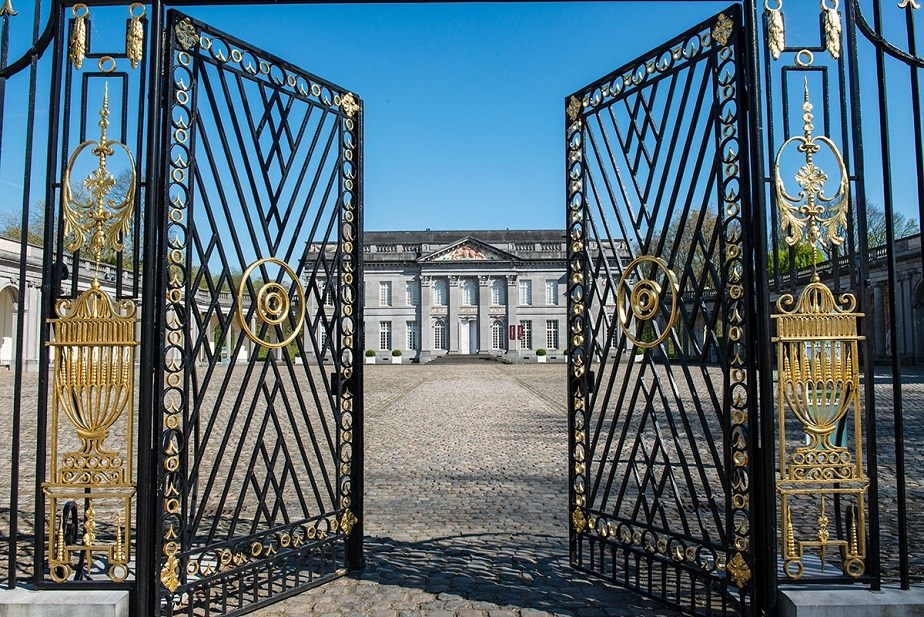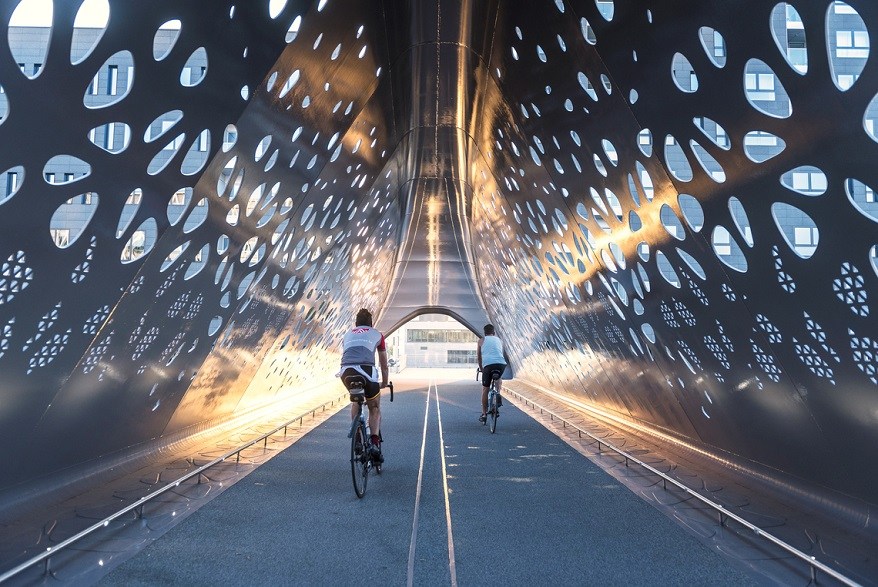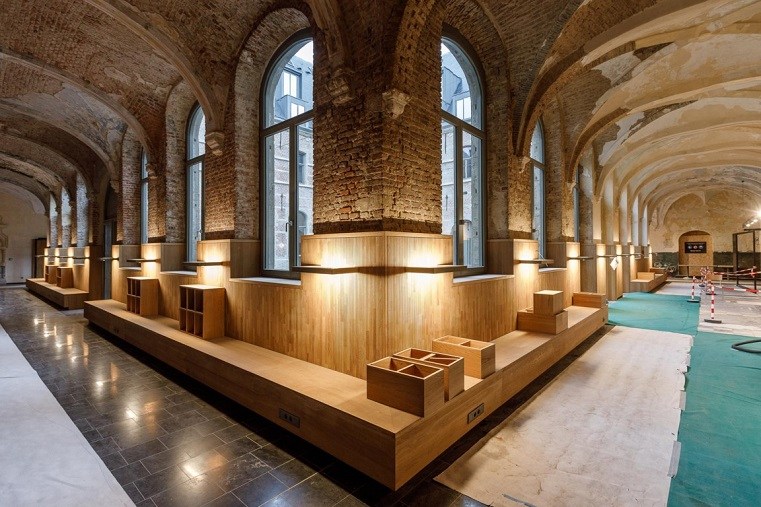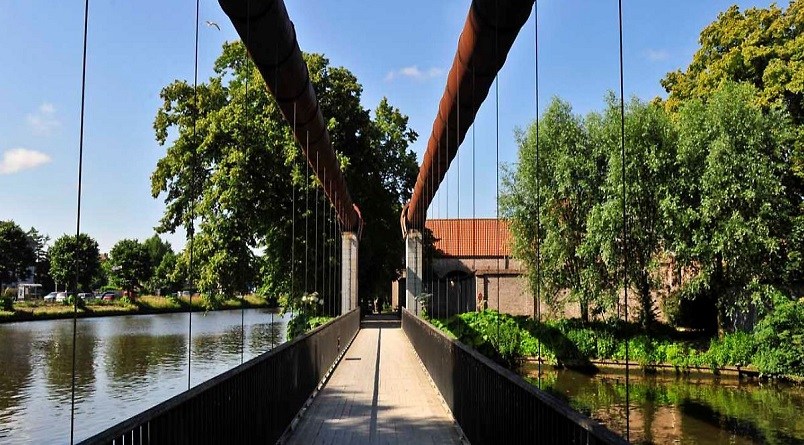The lost cemeteries of 1917
FLANDERS FIELDS
Sam Mendes’ 1917 is the latest attempt to capture the horror of the First World War on film. Unexpectedly, it’s set in northern France, whereas most of the fighting in 1917 happened over the border in Belgium during the Battle of Passchendaele. One of the most costly military campaigns in history, it left at least 600,000 dead and achieved almost nothing.
At the end of the fighting, tens of thousands of bodies lay scattered across the landscape. Some were buried in graves dug along the line of battle. Others simply disappeared into the muddy soil. The Imperial War Graves Commission was set up in 1917 to come up with a more dignified method for burying so many dead. The architect Edwin Luytens finally came up with a plan that led to the creation of the iconic British and Commonwealth war cemeteries.
Luytens proposed creating cemeteries on the battlefield grouping together a minimum of 40 graves, including graves dedicated to unidentified soldiers. In total, 140 war cemeteries where created in the small hill region around Ypres, ranging from the vast Tyne Cot Cemetery with almost 12,000 graves to tiny cemeteries with a few dozen graves hidden in the woods.
Most people visiting the battlefields focus on Tyne Cot, where the sheer scale of the killing is reflected in the endless rows of white gravestones. As you approach the impressive Visitor Centre, a woman’s voice slowly recites the names of soldiers buried in the cemetery.
The small cemeteries are hardly visited at all. But they have a special atmosphere because of their location in the landscape where the soldiers fought and died. They are in isolated spots that are sometimes hard to reach. You might need to rent a bike in Ypres. Or hike down a muddy track. But these little cemeteries provide a unique way of understanding the war.
You might begin by exploring the three cemeteries hidden deep in replanted forest near Ploegsteert village. The Ploegsteert Wood Cemetery can only be reached on foot along a muddy forest track. It is a strange, silent place. Leslie Beauchamp, brother of the writer Katherine Mansfield, was buried here in October 1915 after a grenade blew up in his hand. “Blown to bits!” his devastated sister wrote.
Some of the strangest cemeteries are hidden behind houses in small villages and towns. Wandering in Poperinge, you could easily walk straight past Poperinge Old Military Cemetery, which is concealed behind a house on the road out of town. A narrow path leads to a large empty lawn that looks almost like an English back garden. Some 427 soldiers are buried in long rows here, among the Flemish family houses.
It’s worth tracking down Hedge Row Cemetery, which is possibly the most beautiful of all the cemeteries around Ypres. Hidden in the Palingbeek woods, it’s a silent, forgotten place reached along a forest track. The cemetery stands in a clearing in the woods with three army packs lined up mysteriously outside the wall. They contain objects that soldiers once carried, like gas masks, handkerchiefs and makeup (to play female roles in amateur plays). After the original cemetery was destroyed by shellfire, the new gravestones were placed in a circle to mark the site of the shell crater.
A narrow trail across a field brings you to Spanbroekmolen Cemetery. This is a quiet, lonely spot where almost no one comes, but it is a place where the futility of war can be understood. All of the soldiers buried here came from Ulster. They all died on 7 June 1917 when they were given the order to attack too early. They were killed by machine gun fire just seconds before a massive mine went off that obliterated the German defences.
Deep in a forest, Rifle House Cemetery is one of the most remote cemeteries in Belgium. It can only be reached on foot along a dark forest trail. The track ends at Rifle House Cemetery, where one of the graves belongs to a young Jewish boy called R. Barnett who was just 15 when he died.
The film 1917 ends happily, but the 150 war cemeteries around Ypres show that the war did not end happily for millions of soldiers, on both sides.
A sensual Belgian chateau
CHÂTEAU DE SENEFFE
The beautiful bluestone Château de Seneffe lies at the end of a long drive in a forgotten corner of Belgium. It is not too well known, yet this is one of the most intriguing castles in the country.
It was built in the eighteenth century by a wealthy arms dealer from Brussels. The nouveau riche owner set out to impress his visitors with a classical château, formal gardens and a Palladian theatre in the garden.
Abandoned in the twentieth century, the building came close to being demolished, but was eventually taken over by the Belgian government as a museum of silverware. Now owned by the Walloon region, it has been impeccably restored to provide a grand setting for temporary exhibitions.
The intimate interiors are creatively employed to evoke the intellectual and sensual mood of the Enlightenment. After slipping on shoe covers to protect the parquet floors, you wander through a series of elegant rooms where you can experience the sounds, smells and fabrics of the eighteenth century. It is an astonishingly rich and sensual experience, inspired by rococo paintings and the novel les liaisons dangereuses.
You can watch a film inspired by old scientific experiments, eat lunch in the former orangery and listen to philosophical discussions in the little theatre in the garden. But perhaps the most decadent moment comes on Sunday afternoons when visitors can drink hot chocolate from a silver pot in a quaint Chinese salon.
With a bike, you can head off into Seneffe town to pick up the Ravel cycle trail. Head north on the old railway line 141 to reach the pretty village of Arquennes, where you pass next to a spectacular double bridge across the Brussels to Charleroi canal designed by Gustave Eiffel.
Adventurous bike trails
ANTWERP
Antwerp was ranked last year as one of the top three cities in Europe for cycling, so now is the moment to explore its new infrastructure. Pick up a bike at one of the city’s Velo rental hubs, drop into the tourist office to pick up a free fietskaart (cycle map), and head off in search of the coolest routes.
You might start off by exploring the new cycle lanes around the leien boulevards which run all the way from the law courts designed by Richard Rogers to the MAS museum. Then take a ride along the dedicated cycle lane that runs along the Scheldt waterfront for six kilometres, from the innovative architecture of the Nieuw Zuid quarter to the Droogdokkenpark in the north. Along the way, check out the freshly-landscaped riverside park next to the Sint-Michielskaai where the city has replaced a former car park with a stylish waterfront promenade.
For a more adventurous route, you can follow the Ringfietspad around the edge of the Antwerp ring motorway, all the way from Middelheimpark on the south side to the docklands in the north. Completed in 2019, the 12km route runs mainly through woods and parks bordering the six-lane ring road. The final stretch takes you through Park Spoor Noord and across the stunning new Parkbrug cycle bridge designed by Brussels engineers Ney & Partners.
You can also hop on a bike to explore Antwerp port where you discover a rich collection of architectural styles as well as new bars and restaurants. Begin on the Westkaai waterfront where six towers were built by international architects from 2001 to 2016. Ride to the end of the quay and cross the white bridge, then continue past the Stormkop building. Turn right along Siberiestraat to reach Zaha Hadid’s landmark Port House (worth a look inside if you are here on a weekday). Enjoy the view from the quayside before heading back into town along the bumpy cobbles of the Oostkaai quayside. Stop off for a beer at the Seef brewery at Indiëstraat 21 and take a look inside the curious Kerkschip (church ship) moored at Houtdok-Noordkaai 25.
A new free ferry service from the Steenplein pier lets you explore interesting spots on the left bank of the Scheldt. The ferry drops you off near the Sint-Anna beach where locals go to eat mussels, drink beer and walk their dogs on the little beach.
Head back south to the Frederik van Eedenplein where the tiny frites cabin Frituur LO has stood for more than 60 years. The potatoes are cut by hand each morning and fried in beef fat while you wait. You can sit on the bench outside or cycle to the riverbank to eat your frietjes with a spectacular urban view in front of you. Then cycle back into town through the lovingly-preserved 1930s Sint-Annatunnel.
The most beautiful library in Belgium
HET PREDIKHEREN
Most tourists skip Mechelen as they head to Bruges, Ghent or Antwerp. But this small town half-way between Brussels and Antwerp has recently completed some inspiring urban projects including a waterfront walkway along the River Dijle.
The latest project is the radical transformation of an ancient 17th-century baroque monastery to create a new city library. Founded by Catholic missionaries fleeing from the Netherlands, the monastery has had a troubled history, having been used as barracks, a weapons store and a military hospital.
Abandoned by the army in the 1970s, the building was left to rot for 40 years, until it was finally rescued in 2019 by the Rotterdam architect Mechthild Stuhlmacher. She has preserved intriguing traces from the past, including faded wallpaper, ancient wood beams and carved gravestones.
The Dutch architect went on to reshape the monumental building with polished stone floors, reading desks and a fabulous children’s library under the roof beams. She has a special way with wood, which is incorporated into the fabric to create a warm, welcoming feel throughout the building.
As you wander around, you see photographs taken before the renovation, showing the abandoned ruin at a time when it was colonised by bats, buried under ivy and flooded with rainwater. It’s easy to understand that it took a budget of €25 million to renovate the building. Meanwhile, the monastery church next door is still a decayed ruin waiting for a cash injection.
The library has quickly become a focus of local life with meeting rooms, quiet corners where you can sit with a novel, and a coffee bar in the cloisters. It puts on an inspiring programme of events including philosophical cafés, poetry readings and Sunday jazz sessions when Flemish celebrities are invited to play a personal selection from the library’s collection of 6,000 vintage jazz records.
It’s often argued that libraries are irrelevant in the age of digital technology. Step inside the Predikheren library and you will see that they are more relevant than ever.
Bruges without the tourists
BRUGES RAMPARTS
Millions of tourists head every year for the crowded centre of Bruges, but almost no one walks around the former ramparts. Landscaped in the nineteenth century, they form an almost continuous green belt around the old city. Here is where to head if you want to escape the crowds. You might pass the occasional fisherman, or a local student on a bike, but almost no tourists comes out this far.
The seven-kilometre trail takes you past city gates, forgotten windmills and a wooden crane, with authentic local cafés like De Windmolen providing stops along the way.
The oldest green space was created on the site of the ramparts in 1853. The work was done by the Belgian landscape gardener Egidius Rosseels who had already impressed the city with his design for the Astridpark.
Heading north, you come to the Dampoort, site of a former harbour, but now a confusing mess of roads and canals. A replica mediaeval crane overlooking the harbour basin was built by carpentry students at a local technical college in 2002. It is an exact copy of the old city crane that originally stood on the Kraanplaats, including a tiny wooden bird perched on the top.
Continue along the ramparts route and you eventually come to the Verlorenhoek, or Lost Corner, a peaceful neighbourhood on the edge of town, far from the crowds. The narrow cobbled streets are lined with tiny workers’ houses, rows of whitewashed almshouses and ancient monasteries hidden behind high brick walls.
You can heave to the top of a hill with an old windmill perched on the summit. Standing here, you get a spectacular view of the church spires and red tiled roofs of Bruges. But hardly any tourists.





